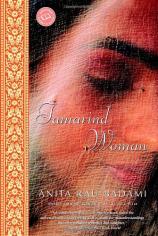Reading Group Guide
Discussion Questions
Tamarind Woman

1. Before commencing the story itself, Badami provides this definition of the tamarind tree: "Folklore has it that the tamarind tree is the home of spirits that do not let anything under the tree survive.Accordingly, travelers are advised not to sleep in its shade. The tamarind tree is never used for auspicious ceremonies, as its fruit is sour. It is believed that the ceremony will turn sour and thus become fruitless and lose all meaning."How did this definition color your reading of the story? Is Saroja the only "Tamarind Woman" in the story? What about Kamini? Amma?
2. In their first exchange of the novel, Kamini complains to her mother that "you are inventing memories."Were there points of disconnect between Kamini's remembrance of the past and Saroja's? If so, whose tale do you believe? Why?
3. What did you think about the structure of the novel? Did you find it enhanced the story to have two separate voices, each located in the present and narrating a version of the past? Why do you think Kamini's voice begins the story, even though her remembrances occur after Saroja's? Why might Badami write the novel this way?
4. Badami engages with India's notorious caste system throughout the novel, though specifically in the characters of Dadda and Paul de Costa. Do you think these characters acted caste-appropriately? Discuss the interplay between caste and Saroja's rather unfeminine personality. What is Badami trying to say about various forms of social strictures?
5. What did you think of Chinna, the woman who is defeminized and ostracized because her mate died too soon? How does her character compare to that of Linda Ayah?
6. Historically, Badami writes during the years just following India's independence from British rule.What sort of residual influence does the colonial rule of Britain still have upon the story's characters, if any? Does this context help to explain the dynamic between Saroja, Dadda, Kamini, and Roopa?
7. Did you find the family life presented in the book typical? In what ways did you relate to this family? What did you not relate to? How much do you think culture informs the differences between family relationships?
8. Did Saroja have a full-blown affair with Paul de Costa? Or was it more like an unrequited crush? Is this the reason he hangs himself in the game room at the club? If not, then why else do you think he would commit such an outlandish final act? How important is his suicide to the novel as a whole?
9. Kamini and Roopa live polarized adult lives: Kamini as the reclusive, neurotic academic, Roopa as the practical mother. Their commonality lies in their distance from both India and Saroja. Given Kamini's remembrances, does it make sense to you that she and Roopa would, in effect, run away from home? Why do you think they have such different adult desires and interests?
10. Ever since she was a child, Kamini has been obsessed with discerning the difference between fact and fiction, though she has always been unable to do so.Through her conversations with her mother, we see that this pattern still holds.What affect has this unsatisfiable obsession had upon Kamini? Does it explain her choice to study engineering and move to Calgary in pursuit of a Ph.D.?
11. Saroja and Dadda have a rather loveless marriage. Linda Ayah's husband cheated on her, Chinna is marked for life as a childless widow. Badami presents many different types of marriage throughout the novel; what do you think she's trying to say about the institution as a whole?
12. As a railway engineer, Dadda travels constantly, sometimes taking his family along with him. Initially Saroja hates to travel, finding it profoundly disorienting.Yet, at the end of her life, traveling becomes a type of liberation for her.What do you think makes the difference for her?
13. Of the male characters in the novel, most seem either indifferent to women or dominant over them. What do you think of the men? Do you feel sympathetic to any of them? Who is the novel's most influential male?
14. While sitting on the hot train, telling her stories, one of Saroja's fellow travelers comments, "Going away is the easiest thing in the world. It is like dying. So simple it is to die. Living is hard, to make this small amount of time loaned to you by the gods worthwhile is hard.The real test is life itself, whether you are strong enough to stay and fight." What do you think of this statement? Furthermore, reflecting on the context of our two narrators —Kamini in a cold room, all alone, and Saroja in a hot train, surrounded by women—who do you think is "traveling" or "going away" and who is "living"?
Tamarind Woman
- Publication Date: March 2, 2004
- Paperback: 304 pages
- Publisher: Ballantine Books
- ISBN-10: 034546494X
- ISBN-13: 9780345464941






